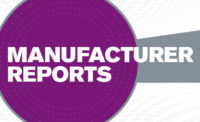Kountze Memorial Lutheran Church in Omaha, Neb., has a long history, and preserving it is a top priority for the church’s members.
The congregation was founded in 1858 and the white limestone German Gothic building dates back to 1906.
The 62,000-square-foot, multilevel building, which occupies an entire city block, boasts an interior designed to impress, including ornamental features such as stained glass, paintings and aged woods.
A centerpiece of the church’s beautiful sanctuary is the three-rank Aeolian-Skinner organ, installed in 1950 as a memorial honoring Kountze’s members who served in World War II.
Since these treasures must be carefully protected and preserved, the church has undertaken numerous renovation projects at a cost of approximately $10 million in the past decade, according to Kountze’s building superintendent, John Bogue.
Because poor indoor air quality can have adverse effects on paint, wood, stained glass and the components of the organ, maintaining the church’s air duct system was a primary concern.
Dust and high humidity can severely damage an organ, potentially causing some of the instrument’s pipes to become stuck open, requiring labor-intensive and time-consuming repairs.
To protect their investments, as well as preserve the church building’s distinctive and historical features, Kountze needed to keep the building’s indoor air as free of excessive humidity and airborne pollutants as possible.
Fighting humidity
In spring 2014, Kountze undertook a $1.4 million organ renovation, concurrent with electrical, plumbing and HVAC construction renovations.
Bogue said that prior to the air-system renovations, “humidity was a significant problem,” and also cited “visibility issues” asserting “some things were not as clean as they should be.”
After completion of the job, Bogue said he was very satisfied with the results of the church’s HVAC overhaul.
“The indoor air quality has improved tremendously and the costs of operating the system and maintaining the building at the correct temperatures and comfort levels have (been) reduced substantially,” he said.
Significant problems arise as ductwork ages. Fiberglass may become friable and strands can enter the airstream and eventually find their way into the building’s occupied spaces. This makes cleaning even more difficult as the air handler’s insulation gets compacted with dirt and debris.
The U.S. Environmental Protection Agency estimates indoor air can be two to five times more polluted than outdoor air, and this is often due to that buildup of dirt, dust and debris in the duct system. These pollutants enter the system through leaks and holes in the ducts. Duct cleaning is vitally important in order for a facility to have healthy and efficient airflow. After cleaning, sealing and coating the duct system ensures that dirty, dusty air is not pulled into the ducts and recirculated throughout the building.
Because the church wanted to keep church’s air system performing optimally, officials called on Midlands Duct Cleaning of Omaha to inspect and clean the church’s air ducts and air handlers. The project’s supervisor, Midlands’ owner Larry Kuehn, determined that the church’s seven air handlers needed a thorough cleaning, and some of the ductwork should be replaced.
A sealed solution
Kuehn recommended that the air handlers and ductwork be sealed with Carlisle’s RE-500 sealant, noting that some of the air handlers were “in pretty rough shape,” and required some “tender loving care.”
Applied quickly and easily with an airless sprayer, RE-500 helps improve indoor air quality by keeping fiberglass particles from ductwork lining out of the air, Carlisle says.
High-performing RE-500 was the ideal sealant for this job for a number of reasons, officials said. Because of its low volatile organic compound content, quick application and minimal drying time, its application would interfere minimally, if at all, with the other renovations that were taking place alongside the overhaul of the sheet metal works duct system.
Kuehn said he was surprised by how quickly the renovations were completed with the help of RE-500.
“What was supposed to be a monthlong project was completed in only three weeks, thanks to RE-500’s easy application, minimal drying time and no-hassle clean-up,” he said.
Kuehn also noted that use of RE-500 is sure to make future cleaning of the air handlers significantly easier.
“After being sealed with RE-500, the building’s seven air handlers looked practically brand new,” Kuehn said.
He added that RE-500 has been a good product for his team and that its use has greatly increased his company’s ability to meet customers’ ductwork remediation needs. Kuehn adds that he is so satisfied with RE-500 that when he is called to do an inspection in advance of a potential job, he bids each job with sealed ductwork.
Kuehn said that sealing lined ductwork with RE-500 is a “no-brainer.”
The task of renovating Kountze Memorial Lutheran Church’s HVAC system was complicated by multiple factors, including the size and multiple levels of the building, the age of the building, the need to preserve the building’s unique and valuable architectural elements and decorative features, and the fact that other renovation projects were being conducted at the same time as the duct system renovation. The project spanned 55,000 square feet with three floors, and entailed a total of seven air handlers, in the basement as well as on the third floor.
Carlisle said sealing with RE-500 effectively restores the entire air-handler system and ductwork without the expense of removing it all. Products like Hardcast’s RE-500 duct resurfacing product improves indoor air quality by coating the system against dirt and dust while providing a “like new” mold, mildew and fungi resistant duct surface, officials say. RE-500 contains EPA registered components that make the RE-500 resistant to bacterial growth while providing a smooth, semi-gloss finish that is conducive to improved airflow.
“Here’s a way to totally restore air handlers and ductwork at a great savings,” Kuehn said.
This article and its images were supplied by Carlisle Cos. Inc. For reprints of this article, contact Renee Schuett at (248) 786-1661 or email schuettr@bnpmedia.com













